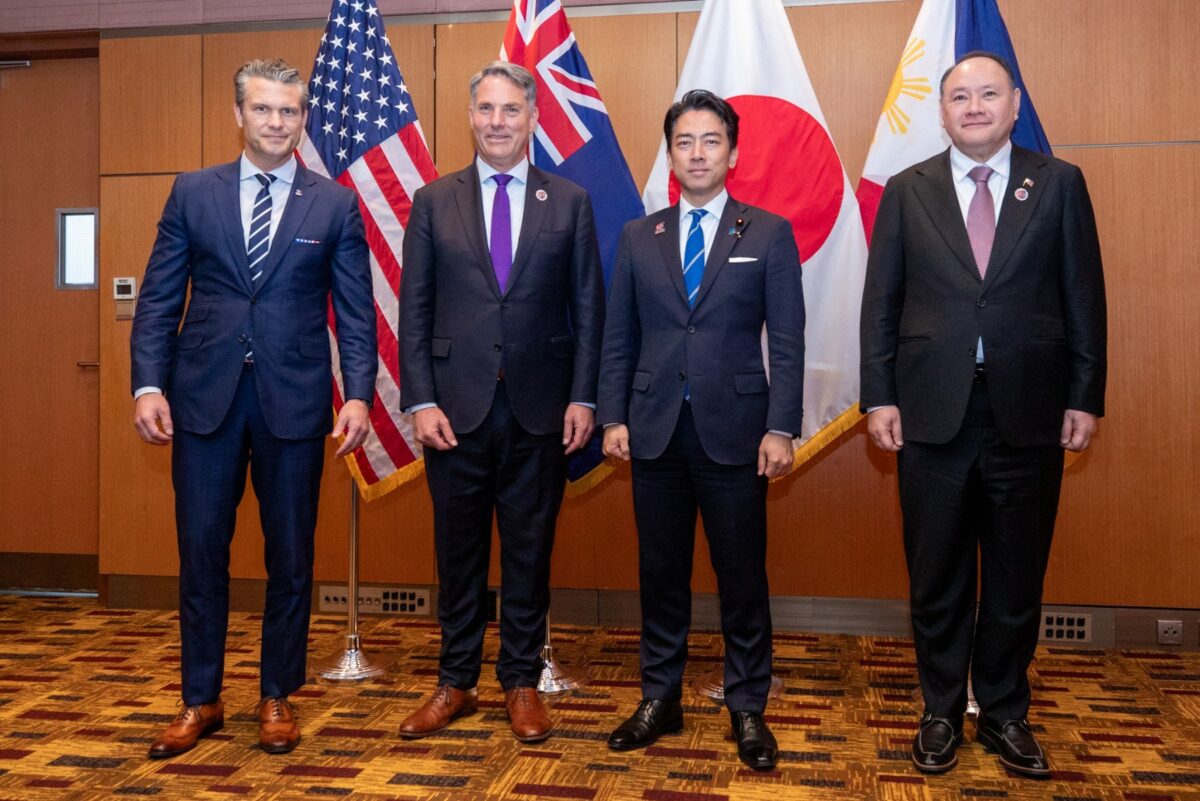PH, US, Japan, Australia want creation of Indo-Pacific defense council

(From left) United States Secretary of War Pete Hegseth, Australian Defense Minister Richard Marles, Japanese Minister of Defense Koizumi Shinjiro, and Defense Secretary of National Defense Gilberto Teodoro, Jr. pose for a picture in Kuala Lumpur, Malaysia, on Saturday, Nov. 1, 2025. —PHOTO FROM THE DEPARTMENT OF NATIONAL DEFENSE
MANILA, Philippines — The Philippines, United States, Australia, and Japan intend to establish the Indo-Pacific Chiefs of Defense Cooperation Council with a security expert said it resembles the diplomatic partnership Quad.
Defense chief Gilberto Teodoro Jr. met with his counterparts from Washington (Pete Hegseth), Canberra (Richard Marles), and Tokyo (Koizumi Shinjiro) in Kuala Lumpur, Malaysia, on Saturday, Nov. 1, and they expressed support for the creation of a framework to form such a council.
The DND, in a statement on Sunday, said this council can support “greater alignment between policy and operational objectives.”
READ: Teodoro-Hegseth talks result in ‘Task Force Philippines’
Security expert Chester Cabalza said it is similar to the Quadrilateral Security Dialogue, which is a diplomatic partnership involving Australia, India, Japan, and the United States that also aims to support a free and open Indo-Pacific.
“The proposed Indo-Pacific Chiefs of Defense Cooperation Council underscores the semblance of the Quad,” said Cabalza, president of the Manila-based think tank International Development and Security Cooperation, in a message to Inquirer on Monday.
“But latest multilateral defense affairs from Canberra, Manila, Tokyo, and Washington soar high with aligned strategic objectives, having the visiting forces and reciprocal access agreements as their common denominator in the new class of symmetrical military equation,” he added.
The Philippines has a Status of Visiting Forces Agreement (SOVFA) with Australia and Japan—the latter more commonly known as the Reciprocal Access Agreement.
Manila also has a long-standing Visiting Forces Agreement with Washington, which is similar to the SOVFA.
According to the Department of Foreign Affairs, the SOVFA provides a legal and administrative framework for the entry and departure of the defense forces, vessels, aircraft and equipment of one party from the territory of the other, for the purpose of training and conducting mutually agreed activities.
The four nations, whose defense leaders met five times in the last three years, also discussed progress related to information-sharing, joint training and operational coordination to enable advanced operations and seamless coordination among their forces.
Thanks to their existing visiting forces deal with the country, the four countries will join forces for Balikatan drills next year.
Tokyo and Canberra will also join Manila and Washington’s bilateral Balikatan exercise in 2026.
“The defense leaders welcomed the upcoming Balikatan 2026 as the next exercise in the Philippines, with participation from all four countries’ respective forces to enhance joint preparedness,” the Department of Defense said.
Before this, both Tokyo and Canberra only sent observers during military drills.
Such moves are seen as a way to deter Chinese aggressive actions in the West Philippine Sea.
Beijing claims almost the entire South China Sea, but a landmark 2016 arbitral award effectively dismissed this while ruling heavily in favor of Manila’s sovereign rights.
A vital trade route, more than 20 percent of total global trade passes through the South China Sea, according to some estimates. /cb


















